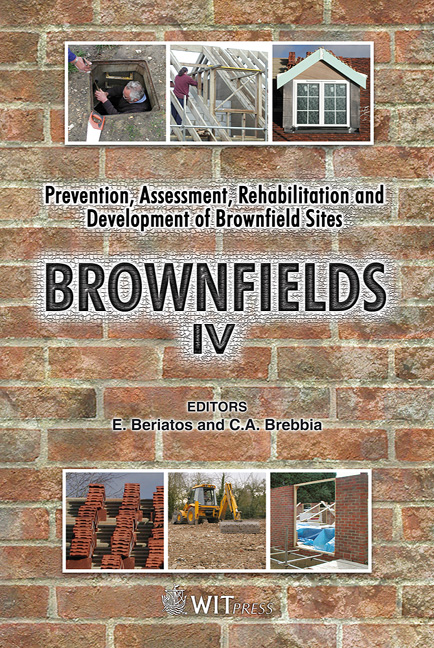Performance Of Italian Zeolitic Tuffs And Pozzolana In 2-chlorophenol Removal From Contaminated Groundwater: The Lab-scale Experience
Price
Free (open access)
Transaction
Volume
107
Pages
9
Page Range
121 - 129
Published
2008
Size
362 kb
Paper DOI
10.2495/BF080121
Copyright
WIT Press
Author(s)
M. R. Boni, S. Sbaffoni & L. Tuccinardi
Abstract
The physical and chemical properties of zeolites and the availability of localized deposits of naturally occurring zeolitized tuffs and pozzolana, make them desirable for and applicable to the remediation of contaminated groundwater. This paper documents the results of a laboratory study to test the capacity of native Italian zeolites to remove 2-chlorophenol (2-CP) from water. Italian zeolitic tuff and pozzolana were characterized in terms of their chemical and structural properties and of their adsorption capacities. Moreover, the experimental activity investigated their adsorption behaviour: time and pH dependence of the adsorption process was evaluated. The results of the time-dependence adsorption study under a constantly stirred condition showed that the adsorption increases with a longer contact time for all samples; the highest adsorption occurred at pH=8÷8.5. Due to the good removal efficiencies obtained, a column test simulating the condition of an in situ permeable reactive barrier was carried out, in order to estimate the removal kinetics and the long-term behaviour. The removal efficiencies reached values higher than 90%, even if some long-term performance worsening occurred, due to the progressive exhaustion of the adsorption sites. These experiments demonstrate the capacity of naturally occurring zeolites to remove 2-CP from water and the opportunity to make economic use of these native deposits for in situ groundwater remediation. Keywords: natural zeolites, 2-chlorophenol, permeable reactive barriers, tuff, pozzolana, groundwater.
Keywords
natural zeolites, 2-chlorophenol, permeable reactive barriers, tuff, pozzolana, groundwater.




